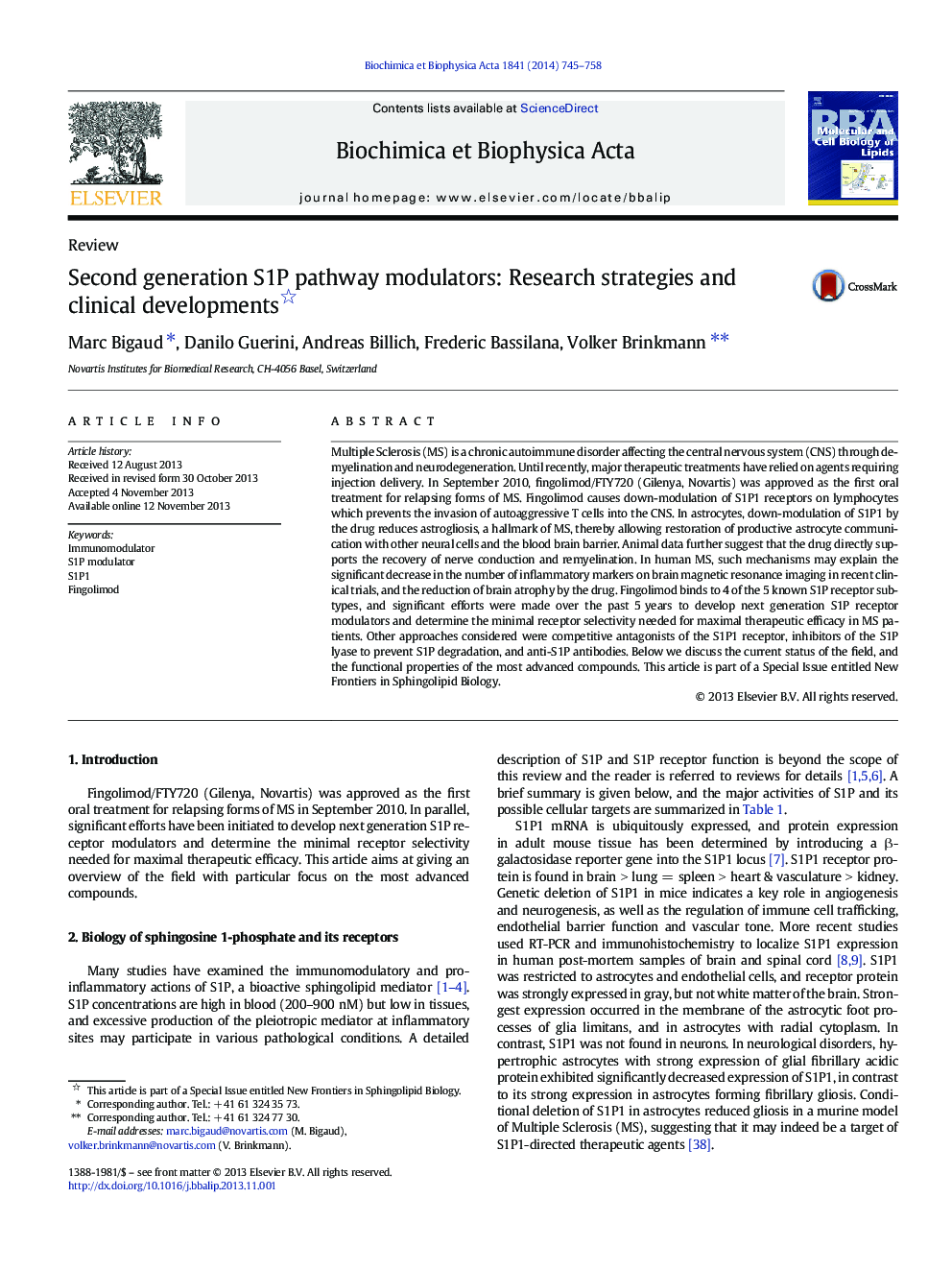| کد مقاله | کد نشریه | سال انتشار | مقاله انگلیسی | نسخه تمام متن |
|---|---|---|---|---|
| 1949229 | 1537730 | 2014 | 14 صفحه PDF | دانلود رایگان |

• Update about clinical development of 2nd generation of S1P1 agonists
• Update about development of S1P1 antagonists
• Update about development of S1P lyase inhibitors
• Update about development of anti-S1P antibodies
Multiple Sclerosis (MS) is a chronic autoimmune disorder affecting the central nervous system (CNS) through demyelination and neurodegeneration. Until recently, major therapeutic treatments have relied on agents requiring injection delivery. In September 2010, fingolimod/FTY720 (Gilenya, Novartis) was approved as the first oral treatment for relapsing forms of MS. Fingolimod causes down-modulation of S1P1 receptors on lymphocytes which prevents the invasion of autoaggressive T cells into the CNS. In astrocytes, down-modulation of S1P1 by the drug reduces astrogliosis, a hallmark of MS, thereby allowing restoration of productive astrocyte communication with other neural cells and the blood brain barrier. Animal data further suggest that the drug directly supports the recovery of nerve conduction and remyelination. In human MS, such mechanisms may explain the significant decrease in the number of inflammatory markers on brain magnetic resonance imaging in recent clinical trials, and the reduction of brain atrophy by the drug. Fingolimod binds to 4 of the 5 known S1P receptor subtypes, and significant efforts were made over the past 5 years to develop next generation S1P receptor modulators and determine the minimal receptor selectivity needed for maximal therapeutic efficacy in MS patients. Other approaches considered were competitive antagonists of the S1P1 receptor, inhibitors of the S1P lyase to prevent S1P degradation, and anti-S1P antibodies. Below we discuss the current status of the field, and the functional properties of the most advanced compounds. This article is part of a Special Issue entitled New Frontiers in Sphingolipid Biology.
Journal: Biochimica et Biophysica Acta (BBA) - Molecular and Cell Biology of Lipids - Volume 1841, Issue 5, May 2014, Pages 745–758